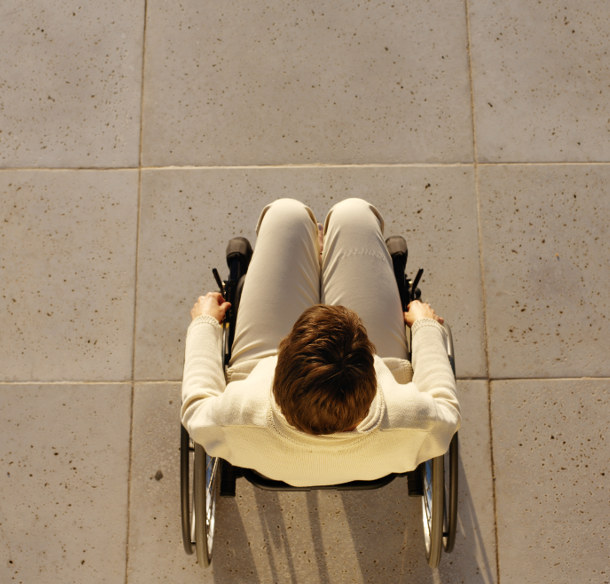
Considering the flood of mobile apps already on the market—some performing such useless functions as simulating zippers and initiating fake calls to boost self-confidence—it’s a wonder it took so long for the AccessNow app to arrive.
At the core of AccessNow is an interactive map with pinpoints that show accessibility ratings for buildings. Users are encouraged to help expand the database by giving locations one of four designations—“Accessible” being the most desirable, followed by “Partially Accessible,” “Patio Access Only” and “Not Accessible.”
The idea behind AccessNow is simple, but for people living with disabilities it’s undoubtedly one of the most useful apps around. Certainly more useful than a fake fan or instant access to the heights of celebrities.
But the app’s creator, Maayan Ziv, hopes it will do more than map out the current state of accessibility. She wants AccessNow to generate a bigger discussion and, in her words, “turn all the red pins, not accessible, to green pins, accessible.”
Accessibility in Ontario
In Ontario, at least, the future looks promising thanks to an aggressive charge to make the province fully accessible by 2025. Even more so when considering that the vast majority of places already pinned on the AccessNow app are in Toronto (about 2,100 of the more than 2,500 locations worldwide).
But a closer look shows a lot of red on that map, more than you might expect from a city that just hosted the Pan Am and Para Pan Am Games.
In December 2015, the Toronto Star reported that thousands of Ontario businesses failed to meet important deadlines related to the province’s accessibility plan. Part of that plan requires businesses to file accessibility and compliance reports. But enforcement by the province has been lax, and the low compliance rates show either a lack of interest in accessibility issues or a lack of knowledge.
Other studies suggest that better accessibility in Ontario could increase retail spending by $9.6 billion and tourist spending by $1.6 billion.
Both scenarios are bad for business and for people living with disabilities.
The Business Case for Improving Accessibility
It’s been estimated that Canadians with disabilities have about $55 billion worth of disposable income, and on average those individuals will recommend a positive, accessible consumer experience to 5 or 6 other people. Other studies suggest that better accessibility in Ontario could increase retail spending by $9.6 billion and tourist spending by $1.6 billion.
As Ontarians age, those numbers will only rise.
Understandably, many retailers and other businesses are hesitant to invest in accessibility solutions like automatic doors or hands-free switches. But they might not be aware of the many secondary benefits and cost-efficient options, including retrofitting and low-energy automatic doors.
If nothing else, earning a green icon for your business on the AccessNow app will send out a positive signal to prospective customers.
Talk to ABC for a wide range of accessibility solutions, including energy-efficient automatic doors, hands-free switches and exit sensors.


 blog
blog